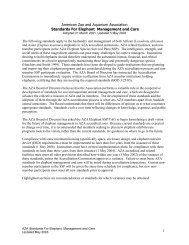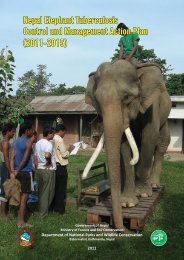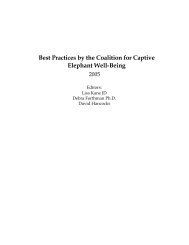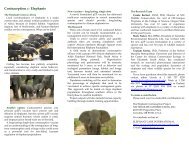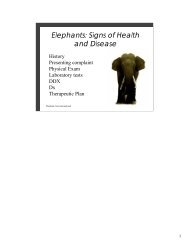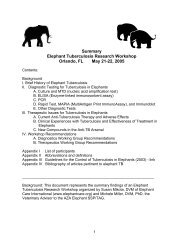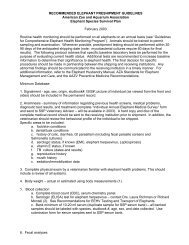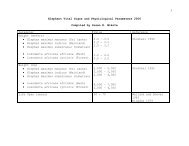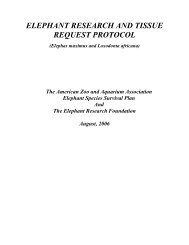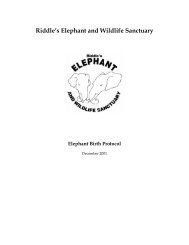Elephants Elephants - Wildpro - Twycross Zoo
Elephants Elephants - Wildpro - Twycross Zoo
Elephants Elephants - Wildpro - Twycross Zoo
- No tags were found...
Create successful ePaper yourself
Turn your PDF publications into a flip-book with our unique Google optimized e-Paper software.
The most critical problems facing elephant conservation are lack of financialresources and growing human populations. Expanding agricultural activitiesare increasingly causing degradation and destruction of elephant habitat. Thisis most evident in West Africa which has the most fragmented elephantranges. Over 40% of elephant range is in central Africa but only 10% of thearea is protected. This is forest habitat and the region supports the mainpopulation of L. a. cyclotis. Southern Africa has the largest number of bushelephants, in mainly savannah habitat. Forest elephants only occur in forestsbut the bush elephant ranges from lowland and montane forest, uplandmoors, swamps floodplains all types of woodland, scattered tree savannahsand range into subdesert.2.6 Conservation and ProtectionThe red list (IUCN 2003) assigns the category and criteria EN A1b to theAfrican elephant. Thus it is categorised as Endangered in the wild due tocriterion A, i.e. population reduction verified by measurements of populationdecline. In 1989 the African elephant was listed as Appendix I on CITES andthis effectively placed a complete ban on the international trade in ivory andivory products. However the species was downlisted again to Appendix II insome southern African countries in 1997. This was and is somewhatcontroversial (Sharp 1997) (Payne et al 1999). The African elephant is currently(i.e. 2004) listed as CITES Appendix I except for certain countries in southernAfrican (Botswana, Namibia, RSA and Zimbabwe) where it is Appendix IIwith certain restrictions including quotas and permit controls see (CITES2000). The sale of elephant products from the Southern African countries willcontinue to be a controversial issue, as is the methodology needed forsuccessful monitoring.The Asian elephant is also categorised as Endangered with the criterion A1cd,i.e. due to population reduction. The species is CITES Appendix I throughoutits range.CITES has two monitoring systems for elephant trade (and seewww.traffic.org): MIKE (Monitoring Illegal Killing of <strong>Elephants</strong>) is theapproved instrument for tracking the situation across Africa and Asia andETIS (Elephant Trade Information System) is the designated system tomonitor illegal trade in ivory and elephant products. ETIS was designed byTRAFFIC.CENSUSING ELEPHANTS IN THE WILDPart of elephant conservation is the monitoring of populations in the field(Kangwana 1996). Aerial surveys are commonly employed to count elephantsin open habitats. These methods are not suitable for censusing forest dwellingelephants and dung counts have been used for this sort of survey (Barnes2001). This method has been shown to be relatively reliable and in many casesmore precise than aerial surveys. However, the rate of decay of dung can varyin different areas, in some cases by as much as 50% (Nchanji and Plumtre2001) and this factor has to be taken into account when calculating20




